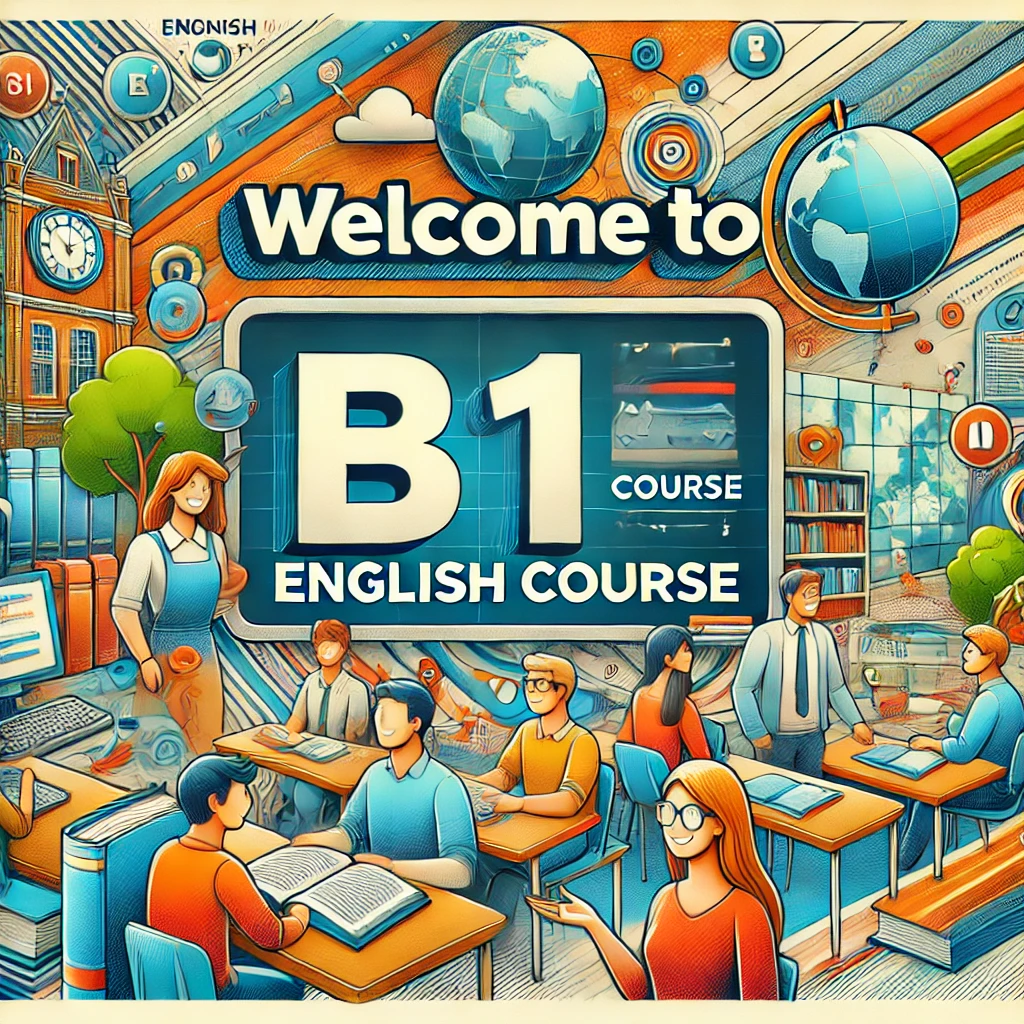
Welcome to our B1 English course for high school students!
This exciting journey is designed to help you build confidence and competence in using English in a variety of real-life situations. Throughout this course, you’ll engage in dynamic activities that will improve your speaking, listening, reading, and writing skills. From interactive discussions and creative projects to practical exercises and fun games with Krugs as rewards, you’ll explore the language in an engaging and supportive environment.
Get ready to enhance your English proficiency, make new friends, and discover the joys of effective communication!
BASIC B1 COURSE INFORMATION
Course Objectives
By the end of this B1 course, here’s what you’ll be able to achieve:
Listening: Can understand most of what is heard in English on television, radio, or the internet; English vocabulary allows the students to comprehend job-related language and most of what people say about feelings and events.
Reading: Can understand most of what is read in English newspapers and internet reports on familiar topics; English vocabulary allows students to comprehend job-related language and most personal written communications about feelings and events.
Writing: Can produce simple connected text on topics that are familiar or of personal interest, such as writing letters and emails on familiar matters. Students are able to take notes of meetings, etc.
Speaking: Can describe experiences and events, dreams, hopes, and ambitions, and briefly give reasons and explanations for opinions and plans.
Course expectations
- Empower students to communicate effectively and confidently in English across a variety of contexts, both in academic and real-world settings.
- Students should respect themselves and others within the communication process, cultivating habits of honesty and integrity into responsible academic behavior.
- Communicate firstly in English while in class.
Syllabus
INTRODUCING MYSELF

Objectives:
- Understand how to introduce yourself in English, including sharing basic personal information
- Learn the importance of introductions in social and professional settings.
Content
- Basic Structure of Introductions:
- Name: “My name is…”
- Age: “I am … years old.”
- Nationality: “I am from…”
- Occupation/Student Status: “I work as a…” or “I am a student at…”
- Hobbies/Interests: “I enjoy…” or “I like…”
- Importance of Introductions:
- Building connections and making a good first impression.
- Showing respect and politeness in social interactions.
Practical Examples:
- “Hello, my name is Maria. I am 16 years old, and I am from Ecuador. I am a student at XYZ High School, and I enjoy playing soccer and reading.”
- “Hi, I’m John. I’m 17 years old, and I’m from Quito. I study at ABC High School, and in my free time, I love watching movies and hiking.”
Let’s watch a video to practice!
In the next presentation, you will find other useful tips for introducing yourself:
Learning Activities
- Introduction Bingo: You will receive bingo cards with different pieces of information (e.g., “likes to play sports,” “has a pet”). You must introduce yourself to others and find classmates who match each item on their card.
- Role-Play Introductions: In pairs, you will practice introducing yourself in different scenarios, such as meeting a new classmate or attending a job interview.
- Interactive Name Tags: You will create a digital name tag with your introduction. You can decorate it with images or icons representing your hobbies and interests. The class will then “meet” each other by viewing these tags.
